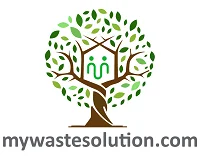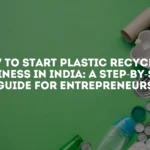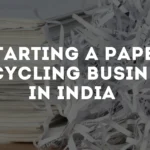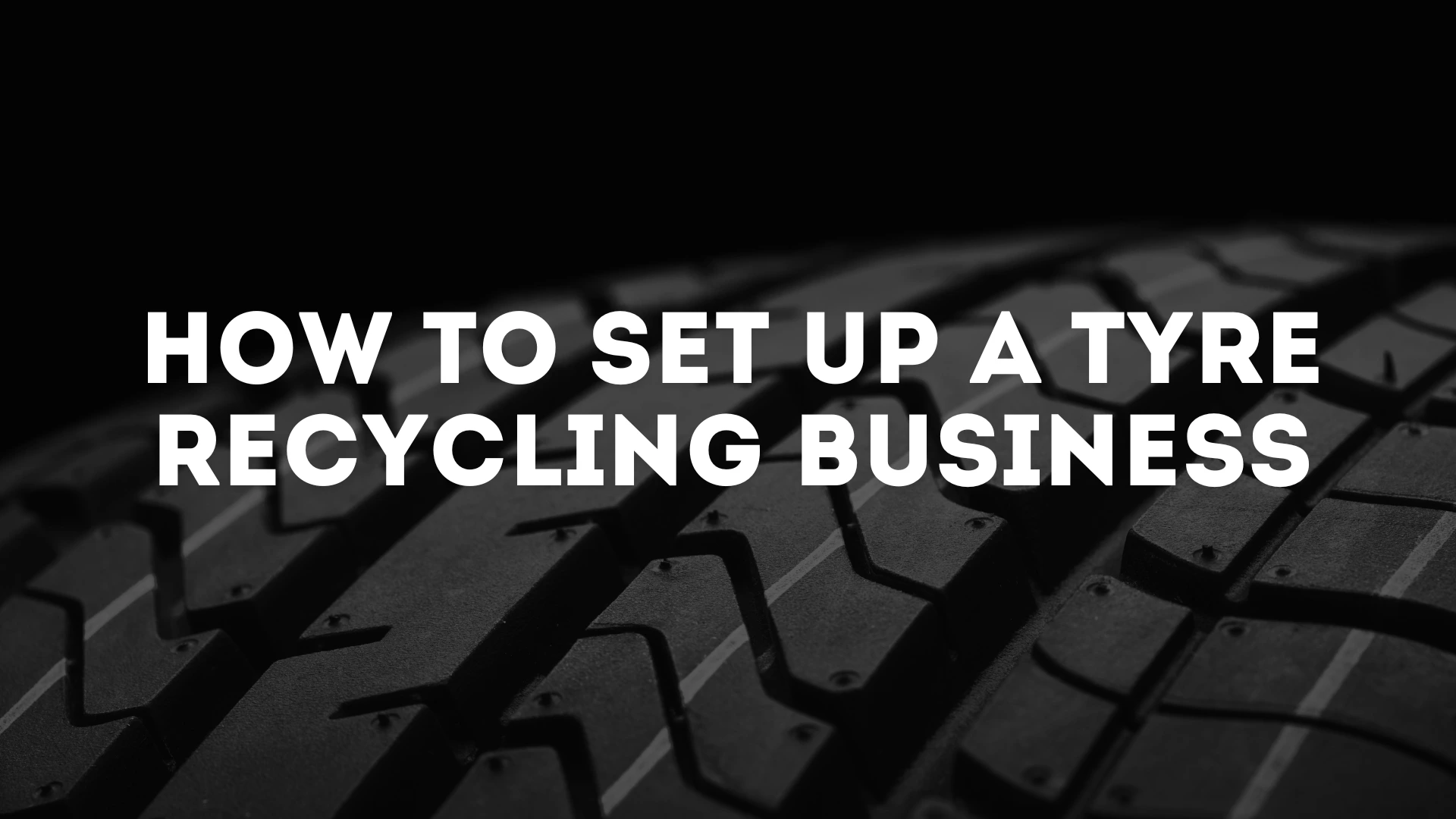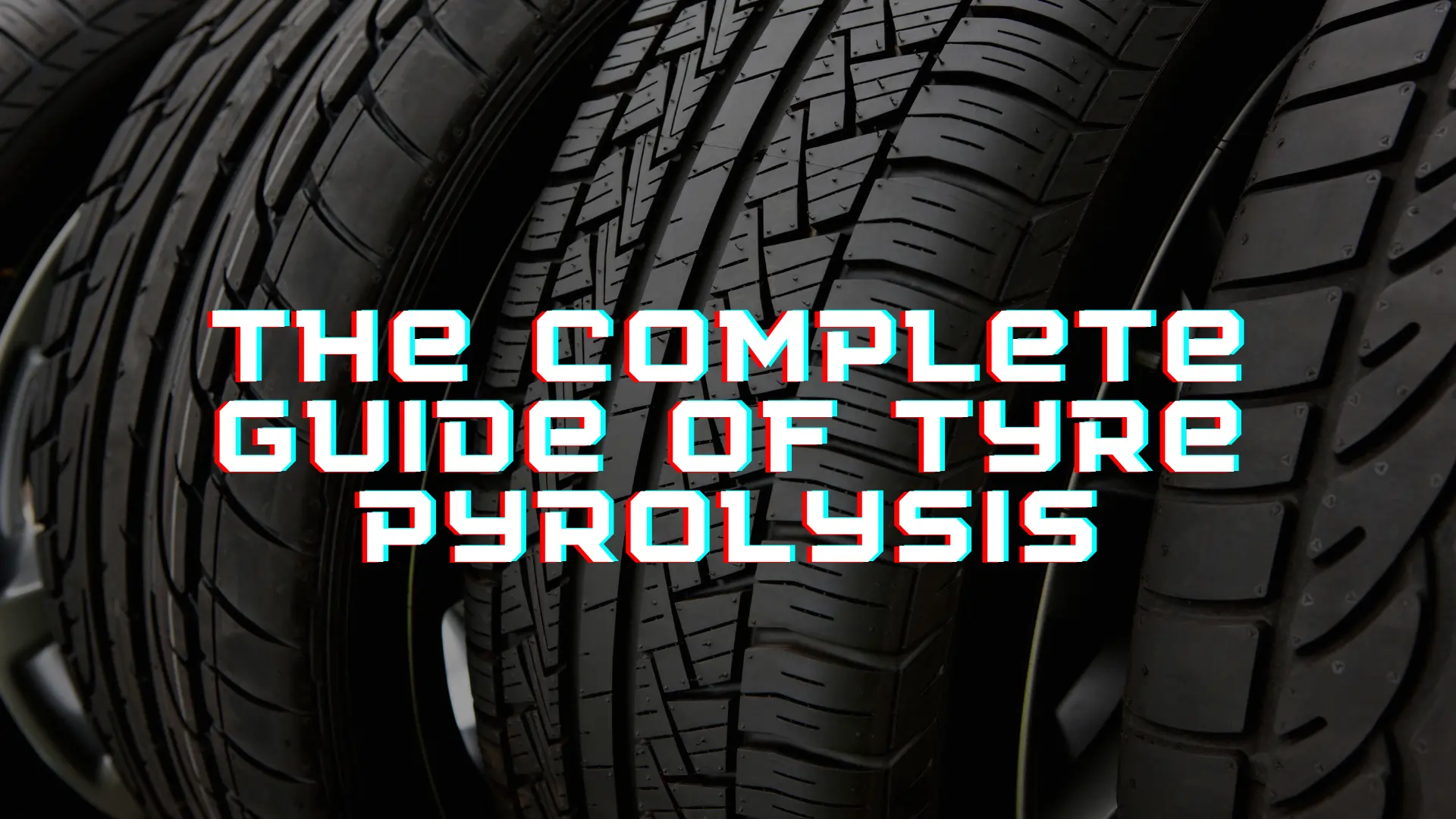Have you ever thought about starting a tyre recycling business? It might sound surprising at first, but trust us—this is one of the most profitable and sustainable business opportunities out there! Ever wondered what happens to waste tyres that are dumped in landfills? In countries like India, where the automobile industry is expanding rapidly, tyre waste management has become a pressing issue. But with every challenge comes an opportunity—this is your chance to turn waste into wealth by investing in a tyre recycling business!
Not only is tyre recycling a highly profitable business, but it also plays a crucial role in promoting environmental sustainability. By setting up a tyre recycling plant, you are actively contributing to waste management solutions while tapping into a booming industry. This business is a perfect example of circular economy practices, where waste is transformed into valuable recycled rubber products. So, if you’re an innovative entrepreneur looking for a sustainable business idea, now is the time to explore the potential of the tyre recycling business!
1. Introduction: Understanding the Tyre Recycling Business
1.1 What is Tyre Recycling?
Tyre recycling is all about reusing, reducing, and repurposing waste tyres to create valuable materials instead of dumping them in landfills or incinerating them. Rather than disposing of old, worn-out tyres, we can recycle and repurpose them into useful resources. Waste tyres pose a serious environmental hazard as they are non-biodegradable. That’s why adopting sustainable waste management is crucial. Through tyre recycling, we can produce crumb rubber, pyrolysis oil, and other valuable by-products used in the construction, fuel, and manufacturing industries. By investing in a tyre recycling business, we reduce tyre waste pollution while creating profitable opportunities in a growing market. Let’s turn waste tyres into valuable resources and contribute to a sustainable future!

1.2 Why Tyre Recycling is Important
The tyre recycling business plays a crucial role in managing the millions of waste tyres discarded globally each year. In India, where the automobile industry is rapidly expanding, we have the opportunity to transform tyre waste into valuable resources while tackling a major environmental challenge. The rising consumption of tyres has made waste management a growing concern. Discarded tyres not only take up landfill space but also pose serious risks to the ecosystem and public health. That’s why tyre recycling is essential—it helps reduce tyre waste pollution, conserves natural resources, and promotes sustainable waste management.
Below, we’ll explore key reasons why investing in a tyre recycling business is both a profitable and eco-friendly choice!
- Pollution Control: Improperly disposed waste tyres release toxic substances that pollute air, water, and soil. When tyres degrade or are burned, they emit harmful chemicals. By investing in a tyre recycling business, we can significantly reduce environmental pollution and promote sustainable waste management.
- Efficient Resource Management: Tyres contain valuable materials like rubber, steel, and synthetic fibers, which can be recovered and reused. This reduces the demand for virgin raw materials, lowers resource-intensive production, and helps conserve natural resources.
- Minimizing Landfill Waste: Since tyres are non-biodegradable, dumping them in landfills leads to long-term waste accumulation. Through tyre recycling, we can repurpose and reuse old tyres, reducing the strain on landfill capacity.
- Lower Greenhouse Gas Emissions: Transforming waste tyres into valuable products or alternative fuels is an energy-efficient and eco-friendly solution. This not only creates new business opportunities but also helps in reducing carbon emissions, contributing to a sustainable future.
1.3 The Growing Tyre Waste Problem in India
India’s booming automotive sector has led to a massive surge in waste tyre generation, exceeding 1.5 million tonnes annually. Just imagine the scale of the tyre waste challenge we are facing! Addressing this issue is crucial for sustainable waste management and environmental conservation. Here are the key highlights of the rising tyre waste problem in India:
✔ High Tyre Waste Generation: India ranks as the fourth-largest automobile market globally, with millions of vehicles on the road. This results in an overwhelming amount of end-of-life tyres (ELTs)—accounting for over 6% of global tyre waste.
✔ Rising Imports of Waste Tyres: India imports a significant volume of waste tyres for pyrolysis and recycling. While this supports the tyre recycling business, it also adds to the domestic tyre waste burden, making efficient disposal and management even more challenging.
✔ Inadequate Recycling Infrastructure: The lack of proper recycling facilities worsens the problem. Currently, only a small fraction of used tyres is recycled or repurposed effectively, while the majority end up in illegal dump sites, rivers, or landfills, causing severe environmental hazards.
By investing in a tyre recycling business, we can turn this growing challenge into an eco-friendly and profitable opportunity while contributing to a cleaner, greener future!
Table given below explain in detail about growing tyre waste problem in India-
| Sr.No. | Tyre waste problems | Description |
| 1. | Environmental Impact | Non-Biodegradability: Tyres are made from materials like synthetic rubber and steel, which are non-biodegradable. Thus, persist in the environment for hundreds of years.Air Pollution: The practice of burning tyres for fuel in brick kilns or as a cheap source of energy in small industries emits large amounts of toxic gases, such as sulfur dioxide and particulate matter. This leads to environmental degradation and also impacts on the health of individuals.Soil and Water Pollution: Improperly dumped waste tyres in landfill tend to release toxic substances. This includes heavy metals and harmful chemicals that can leach into the soil and groundwater. |
| 2. | Social Impact | Fire Risks: As we know that tyre stockpiles are highly flammable, and tyre fires are difficult to extinguish. They release carcinogenic gases and produce prolonged air pollution.Vector-Borne Diseases: Discarded tyres often collect rainwater or waste water, which creates breeding grounds for mosquitoes. No doubt, the risk of spreading diseases like malaria, dengue, and chikungunya will increase. |
| 3. | Economical and Regulatory Impact | Inadequate Recycling Infrastructure: Limited recycling infrastructure due to high manufacturing cost increases the waste tyre problem.Lack of Stringent Policies: Despite strict rules and regulations like the Environment Protection Act, enforcement is weak. There is no comprehensive framework to manage ELTs effectively. Thus, we lack behind in execution of impactful policies.Unregulated Pyrolysis Units: Many pyrolysis plants in India operate without proper compliance or proper adherence to environmental standards. Thus leads to environmental degradation and harmful emissions during the process of breaking down tyres. |
Now that we understand the scale of the tyre waste problem, it’s clear that urgent action is needed. Tackling this crisis requires a collaborative, multidisciplinary approach, where government bodies, industries, entrepreneurs, and public participation play a crucial role. Here’s how we can effectively manage and reduce tyre waste in India:
- Stricter Regulations: Enforcing stronger policies for pyrolysis plants and implementing strict bans on illegal tyre burning to curb environmental pollution.
- Extended Producer Responsibility (EPR): Holding tyre manufacturers accountable for the collection, recycling, and safe disposal of end-of-life tyres (ELTs) through mandatory EPR policies.
- Ban on Waste Tyre Imports: Restricting the import of waste tyres to prevent an additional waste burden, encouraging local recycling solutions instead.
- Advanced Recycling Technologies: Promoting sustainable innovations like devulcanization, crumb rubber production, and eco-friendly pyrolysis to improve resource recovery.
- Tyre-Derived Products: Encouraging industries to develop value-added products such as rubberized asphalt, playground mats, and sports surfaces, ensuring a circular economy.
- Industry Collaboration: Partnering with tyre manufacturers, recyclers, and policymakers to invest in advanced recycling infrastructure and R&D for better waste management.
- Public Awareness & Education: Launching campaigns and initiatives to educate people on the importance of proper tyre disposal and the hazards of improper waste management.
- Government Incentives & Subsidies: Offering financial support to businesses investing in tyre recycling plants and green technologies, boosting the growth of the tyre recycling business.
- Tax Benefits for Sustainable Businesses: Introducing tax exemptions and incentives for companies engaged in eco-friendly tyre recycling solutions, fostering long-term sustainability.
2. Why Invest in Tyre Recycling in India?
2.1 Market Potential of Tyre Recycling in India
Experts predict that the recycled rubber products market will reach billions of dollars in value. The waste tyre recycling business is creating a moneymaking opportunity for entrepreneurs. Besides this due to rising consumer and corporate focus on sustainability; market potential of tyre recycling business will increase day by day.

In the financial year 2023, the total tyre production in India stood at around 217.4 million units. This was an increase of 6% from last year.
Production volume of tyres in India from financial year 2011 to 2023
| Financial Year | Production volume of tyres (in million units) |
| 2011 | 119.2 |
| 2012 | 122.8 |
| 2013 | 125.4 |
| 2014 | 128.9 |
| 2015 | 146.1 |
| 2016 | 152 |
| 2017 | 166.94 |
| 2018 | 169.07 |
| 2019 | 176.8 |
| 2020 | 177.67 |
| 2021 | 191.8 |
| 2022 | 205.13 |
| 2023 | 217.35 |
India’s thriving automotive sector has fueled a massive demand for tyres, with production spanning trucks, buses, passenger cars, two-wheelers, three-wheelers, light commercial vehicles, tractors, and Off-the-Road (OTR) tyres. By 2026, the tyre industry is expected to quadruple in size compared to 2015, generating huge market opportunities. The Indian tyre market has been dominated by major players like MRF, Apollo Tyres, and JK Tyres, collectively holding over 50% of the market share. Alongside this, the Indian tyre recycling industry is projected to grow at a CAGR of 7-10% over the next decade, driven by:
- Rising Tyre Waste Generation – A growing number of end-of-life tyres (ELTs) require sustainable disposal solutions.
- Increasing Investments in Recycling Infrastructure – The demand for advanced waste management technologies is attracting new business opportunities.
- Growing Demand for Eco-Friendly Products & Energy Alternatives – Recycled tyre by-products such as crumb rubber, pyrolysis oil, and reclaimed rubber are gaining traction in multiple industries.
With government incentives, a surge in demand for recycled materials, and a push for circular economy initiatives, the tyre recycling industry in India presents a lucrative investment opportunity. Globally, the tyre recycling market was valued at $7.2 billion in 2022 and is forecasted to grow at a CAGR of 3.5% from 2023 to 2030.
2.2 Government Support for Tyre Recycling Initiatives
tarting a tyre recycling business requires government backing and strict regulations for sustainable operations. Acknowledging the rising tyre waste problem, the Indian government has introduced policies, incentives, and regulatory measures to promote tyre recycling.
These initiatives include:
- Strict Regulations – Enforcing laws to monitor and control tyre disposal and recycling.
- Financial Incentives – Offering subsidies and tax benefits to encourage eco-friendly recycling technologies.
- Extended Producer Responsibility (EPR) – Mandating tyre manufacturers to manage and recycle end-of-life tyres.
Lets understand through different ways how government support plays an important role in tyre recycling initiative-
| Sr.No. | Government Initiatives | Description |
| 1. | Key Policies and Regulations | The Hazardous and Other Wastes (Management and Transboundary Movement) Rules, 2016 regulate the import, export, and management of waste tyres in India.The waste management rules aim to ensure that waste tyres, especially those used in pyrolysis, are managed sustainably without causing harm to the environment. Extended Producer Responsibility (EPR): The Ministry of Environment, Forest and Climate Change (MoEFCC) has proposed EPR regulations for end-of-life tyres (ELTs). Under this EPR framework; tyre manufacturers and importers are responsible for collecting, recycling, or reusing a certain percentage of the tyres they sell. Non-compliance can lead to penalties, encouraging active participation in recycling initiatives. |
| 2. | Support for Recycling Technologies | Significance is placed on clean technologies and the adoption of pollution control measures.The government has introduced stricter environmental standards for pyrolysis plants to minimize pollution caused by tyre recycling. It’s an impactful initiative to help in promoting pyrolysis with standards.In Research and Development (R&D); Government-supported institutions, such as the Indian Rubber Manufacturers Research Association (IRMRA), are involved in R&D to promote advanced tyre recycling techniques like devulcanization and the production of crumb rubber. |
| 3. | Financial Incentives | The government provides financial support to entrepreneurs and businesses to set up recycling facilities, including subsidies for equipment and infrastructure.State-Level Incentives: States like Gujarat and Maharashtra encourage tyre recycling industries by offering benefits like tax exemptions and reduced land costs.Green financing options, including green bonds, are promoted to fund tyre recycling projects, aligning with India’s commitment to sustainability and give us eco-friendly business opportunities. |
| 4. | Infrastructure Development and Public-Private Partnerships (PPPs) | Public-Private Partnerships (PPPs) are encouraged to develop state-of-the-art tyre recycling facilities, reducing the burden on public infrastructure.Collaboration with industries to set up collection centers for ELTs has been promoted.Programs like Startup India provide support to innovative startups in the tyre recycling sector, encouraging the development of sustainable and scalable solutions. So government policies are here to support Startups which you have aimed for! |
| 5. | Use of Recycled Tyres in Public Projects | Indian Road Congress (IRC) has approved the use of crumb rubber in road construction. Also known as Rubberized Asphalt in Roads.Government projects under Pradhan Mantri Gram Sadak Yojana (PMGSY) and Bharatmala Pariyojana promote the use of rubberized asphalt for durable and eco-friendly roads.Recycled tyre products, such as playground mats and sports turf, are being incorporated into urban infrastructure under programs like Smart Cities Mission. This kind of urban development project will contribute a lot to resource management. |
| 6. | Awareness Campaigns and Advocacy | The Indian government is actively supporting tyre recycling business through policies, financial incentives, infrastructure development, and public-private partnerships. With stricter enforcement of regulations and continued innovation, tyre recycling business can emerge as a significant contributor to India’s sustainability goals, aligning with its vision of a circular economy and a cleaner environment.Public Awareness Drives: Campaigns are conducted to educate businesses and consumers on the importance of proper tyre disposal and the environmental benefits of recycling.Industry Associations: Bodies like the Automotive Tyre Manufacturers Association (ATMA) collaborate with the government to promote sustainable waste management practices. |
2.3 Benefits of a Tyre Recycling Business
Now that you understand how serious the waste tyre problem is, this is your opportunity to make an impact. By starting a tyre recycling business, you not only tackle the growing challenge of managing end-of-life tyres (ELTs) but also unlock business potential. This industry helps reduce environmental hazards while creating opportunities for entrepreneurs. With increasing demand for sustainable solutions, investing in tyre recycling allows you to contribute to a greener future while building a profitable venture. Here’s an overview of the key benefits:
2.3.1 Environmental Benefits
- Pollution Control – Prevents the release of harmful chemicals and microplastics from tyres, which can leach into the soil and water when improperly disposed of. Also helps in reducing air, water, and soil pollution.
- Waste Reduction – Effectively manages the increasing volumes of waste tyres, reducing landfill overflow and preventing illegal dumping.
- Conservation of Resources – Recovers valuable materials like rubber, steel, and carbon black, reducing reliance on virgin raw materials and promoting sustainable resource management.
2.3.2 Economic Benefits
- Profitable Market Demand – Recycled tyre products like crumb rubber, tyre-derived fuel (TDF), and reclaimed rubber have strong industrial demand in construction, manufacturing, and energy sectors, supporting the circular economy.
- Job Creation – Tyre recycling facilities create employment across the value chain, from collection and transportation to processing and manufacturing.
- Cost-Effective Materials – Recycled rubber provides an affordable alternative to virgin raw materials, reducing production costs for industries.
2.3.3 Diverse Revenue Streams
Tyre recycling businesses generate revenue through multiple products:
- Crumb Rubber – Used in road construction, playgrounds, and athletic tracks.
- Tyre-Derived Fuel (TDF) – A sustainable energy source for cement kilns, paper mills, and power plants.
- Reclaimed Rubber – Essential for manufacturing new tyres, belts, and rubber products.
- Steel Wire – Extracted from tyres and sold as scrap for industrial applications.
- Carbon Black – A pyrolysis by-product used in inks, paints, and plastics.
2.3.4 Alignment with Sustainability Goals
- Circular Economy – Encourages material reuse, waste reduction, and a lower carbon footprint across industries.
- Government Incentives – Businesses benefit from financial support, tax benefits, and subsidies for recycling initiatives.
- Regulatory Compliance – Ensures adherence to environmental laws and waste management regulations.
2.3.5 Contribution to Infrastructure Development And Innovation and Technological Advancement
Recycled tyres play a vital role in construction and infrastructure projects. Rubberized asphalt enhances road durability and reduces noise pollution. In civil engineering, recycled tyres are used as lightweight fill materials, drainage layers, and retaining walls. Additionally, the industry fosters innovation in sustainable recycling technologies like devulcanization for reclaiming rubber and eco-friendly pyrolysis for producing oil and carbon black.
2.3.6 Energy Efficiency
Recycling tyres into fuel or raw materials consumes less energy compared to producing them from scratch. This makes tyre recycling an energy-efficient solution, helping businesses and industries reduce energy consumption and operational costs.
2.3.7 Scalability and Export Opportunities
Tyre recycling businesses offer scalable growth, enabling expansion into domestic and international markets. Exporting crumb rubber, reclaimed rubber, and other recycled materials to countries with high demand presents a profitable opportunity for business growth.
2.3.8 Social Impact
Tyre recycling helps reduce health hazards by preventing mosquito breeding in discarded tyres and minimizing the risk of toxic tyre fires. It also lowers harmful emissions like sulphur dioxide, nitrogen oxides, and particulate matter, improving air quality. Additionally, it promotes public awareness of waste management and environmental responsibility.
3. Market Analysis for Tyre Recycling Business
3.1 Understanding Tyre Recycling Market Dynamics
To start a tyre recycling business, having a deep understanding of market trends is crucial. The global tyre recycling market is valued at USD 7.44 billion in 2024 and is projected to reach USD 8.92 billion by 2029, growing at a CAGR of 3.7%. A strong market analysis is essential for business growth, requiring insights into market size, growth trends, and key influencing factors.
The tyre recycling market is expanding globally due to the increasing challenge of managing end-of-life tyres (ELTs). India alone generates over 100 million waste tyres annually, making it a major contributor to global tyre waste. With rising automobile ownership, the market presents significant growth opportunities, and India’s tyre market is expected to grow at a 7-10% CAGR in the coming years.

A key driver of the tyre recycling industry is the automobile sector, which continuously adds to the supply of millions of ELTs each year. This results in a rising waste burden in landfills. The demand for recycled tyre products is increasing across various industries, including construction, manufacturing, and energy, with key applications such as:
- Crumb Rubber – Used in road construction, sports fields, and playground surfaces.
- Reclaimed Rubber – Essential for tyre manufacturing, belts, and mats.
- Tyre-Derived Fuel (TDF) – An alternative energy source for cement kilns and power plants.
India Tyre Recycling Market 2024-2033(Byproduct)
Tyre recycling businesses open doors to global market opportunities, particularly through export potential. Recycled materials like crumb rubber and reclaimed rubber have high demand in Europe and North America, providing a growth opportunity for entrepreneurs. Additionally, Public-Private Partnerships (PPPs) allow innovative entrepreneurs to collaborate with governments in developing recycling infrastructure and tackling environmental concerns.
A strong market strategy requires considering future trends and sustainability. With stricter regulations on tyre disposal worldwide, recycling efforts are being reinforced, making it essential to stay updated on evolving policies. Businesses are now shifting towards closed-loop systems, where tyres are continuously recycled into new products, reinforcing the circular economy.
Keeping an eye on innovation and R&D in tyre recycling technologies is also crucial. Understanding the market dynamics highlights a profitable and rapidly growing industry. By addressing challenges and leveraging opportunities, businesses can drive sustainable solutions, fostering innovation and long-term success in the tyre recycling sector.
3.2 Identifying Target Customers in the Tyre Recycling Sector
Before starting a business, understanding your customers in detail is essential. A successful entrepreneur always prioritizes customer needs. The tyre recycling industry caters to a wide range of sectors by offering eco-friendly and cost-effective materials derived from recycled tyres. Identifying the right target audience is crucial for maximizing market reach and profitability.
Key customers in this industry include:
| Sr. No. | Target Customers in Tyre Recycling sector | Key Needs | Target Segments |
| 1. | Construction Industry | Rubberized Asphalt: Used in road construction for better durability, noise reduction, and crack resistance.Lightweight Fill Materials: Shredded tyres are used as backfill in retaining walls and embankments. | Road contractors working on government or private infrastructure projects.Companies involved in large-scale construction, such as bridges and highways.Urban planners and agencies developing smart cities or eco-friendly infrastructure. |
| 2. | Energy and Manufacturing Sectors | Tyre-Derived Fuel (TDF): A cost-efficient and eco-friendly substitute for coal and oil.Carbon Black: Used in the production of rubber goods, inks, and coatings | Cement plants, paper mills, and steel manufacturers using TDF as an alternative energy source.Manufacturers of industrial goods require recycled carbon black. |
| 3. | Automotive Industry | Reclaimed Rubber: Used in the production of new tyres, rubber belts, and automotive components. | Tyre manufacturers incorporate recycled rubber into their products.Automotive parts manufacturers looking for sustainable raw materials. |
| 4. | Sports and Recreational Facilities | Crumb Rubber: Used in creating surfaces for playgrounds, sports fields, and gym flooring. | Sports facility developers and contractors.Manufacturers of athletic surfaces and turf.Schools, parks, and community centers investing in eco-friendly recreational infrastructure. |
| 5. | Consumer Goods Industry | Recycled rubber for making products such as footwear, mats, furniture, and decorative items. | Manufacturers of eco-friendly consumer goods.Retailers and e-commerce platforms catering to sustainable product demand. |
| 6. | Government and Municipal Bodies | Solutions for managing end-of-life tyres (ELTs) in landfills and waste streams. | Municipal corporations managing solid waste.Government bodies investing in eco-friendly infrastructure and public projects. |
| 7. | Export Market | Recycled tyre materials like crumb rubber, reclaimed rubber, and carbon black. | International buyers in regions like Europe, North America, and the Asia-Pacific, where sustainability regulations drive demand for recycled products. |
| 8. | Small and Medium Enterprises (SMEs) | Affordable raw materials like reclaimed rubber and crumb rubber for manufacturing. | SMEs in industries such as footwear, rubber goods, and adhesives |
| 9. | Agriculture Sector | Recycled tyre products like mats and durable materials for farming applications | Farmers and agribusinesses looking for affordable, durable solutions for irrigation and flooring |
| 10. | Emerging Niche Markets | Eco-Friendly Lifestyle Brands: Companies focusing on sustainable and recycled products for eco-conscious consumers. | Innovative Applications: Startups and innovators developing new uses for recycled materials, such as 3D printing filaments and advanced composites. |
Key Customers in the Tyre Recycling Industry
From the above table, you now have a clear understanding of how target customers in the tyre recycling sector range from large-scale industries to niche markets. By identifying the specific needs of these segments, businesses can customize their products and strategies to maximize impact. Implementing effective marketing approaches to leverage the growing demand for sustainable and cost-effective materials can drive positive results. Additionally, collaborating with industries, government bodies, and international buyers can further expand opportunities in this rapidly growing market.
3.3 Analyzing Competitors in the Tyre Recycling Business
To succeed in the tyre recycling business, conducting a competitor analysis is crucial for identifying market gaps and differentiators. Understanding unique recycling processes and establishing a distinct market position will help your business stand out. A comprehensive competitor analysis allows you to assess the market landscape, industry policies, and emerging opportunities.
One key aspect of competitor analysis is identifying different types of competitors in the tyre recycling sector. These competitors can be categorized as follows:
| Sr.No. | Types of Competitors | Description |
| 1. | Direct Competitors | Companies that specialize in tyre recycling and produce similar products like crumb rubber, reclaimed rubber, tyre-derived fuel (TDF), and carbon black. |
| 2. | Indirect Competitors | Businesses involved in alternative waste management or offering substitutes to recycled tyre products, such as virgin rubber or fossil fuels. |
| 3. | Informal Sector | Small-scale and unorganized players, especially prevalent in developing countries, who often operate at lower costs but with non-compliance to environmental standards. |
In addition to identifying competitor types, it is essential to monitor the leading players in the tyre recycling industry.
On a global scale, companies like Genan—one of the largest tyre recycling firms—specialize in crumb rubber production, while Liberty Tyre Recycling dominates North America, focusing on TDF (tyre-derived fuel) and rubberized asphalt. In India, notable competitors include GRP Limited, which specializes in reclaimed rubber and rubber compounds, and Tinna Rubber and Infrastructure Ltd., known for crumb rubber and rubberized bitumen. Additionally, local pyrolysis operators engage in basic pyrolysis to produce tyre-derived oil and carbon black. To gain a competitive advantage, businesses must assess:
- Diverse product range
- Regulatory compliance
- Technology leadership
- Scale of operations
- Market trends
- Customer preferences
- Potential opportunities
By leveraging these insights, a tyre recycling business can develop effective strategies, align with sustainability goals, and establish a strong market presence in this rapidly expanding industry.
Explore Rubber Waste Treatment Solutions
Find top machinery, plants, tools, resources, companies, and consultancy for comprehensive tyre waste recycling business needs.
4. Tyre Recycling Processes: Best Methods for Businesses
4.1 Overview of Tyre Recycling Methods
As per your requirements, there are different tyre recycling methods available. Tyre recycling involves processing end-of-life tyres (ELTs) into valuable and reusable materials or energy. The method chosen depends on desired outputs, technology availability, and environmental considerations. Here are some of the most popular tyre recycling methods among entrepreneurs:
- Shredding: Produces raw rubber. Tyres are shredded into smaller pieces, which are used in playground surfaces, road construction, and landscaping.
- Grinding: Converts tyres into crumb rubber—fine rubber particles used in asphalt, sports surfaces, and molded products.
- Pyrolysis: Converts tyres into oil and char. This process heats tyres in an oxygen-free environment, producing fuel, gas, and carbon black—making it both profitable and environmentally beneficial.
To explore more about different tyre recycling methods and how to set up a waste tyre recycling plant, check out our detailed blog on the topic.
Now, let’s dive into one of the most important tyre recycling methods—Pyrolysis.

4.2 Pyrolysis: Converting Tyres to Fuel and By-products
Pyrolysis is one of the most effective methods for converting waste tyres into valuable fuel and raw materials. This process involves the thermal decomposition of tyres in an oxygen-free environment, breaking them down into useful by-products.
Key Products of Tyre Pyrolysis:
Tyre-Derived Oil (TDO): A valuable alternative fuel or chemical feedstock.
- Carbon Black: Used in manufacturing inks, paints, and rubber products.
- Steel Wire: Extracted and repurposed for industrial applications.
By transforming waste into energy and reusable materials, pyrolysis reduces dependence on fossil fuels and promotes sustainability. However, it requires significant initial investment, advanced technology, and proper emission control to ensure an eco-friendly and efficient operation.
4.3 Crumb Rubber: Producing Recycled Rubber Materials
Crumb rubber is created by grinding tyres into small particles. It is widely used in playgrounds, roads, and sports surfaces, with demand increasing in construction and sports industries. Let’s have a look how crumb rubber is produced-
| Sr.No. | Steps | Description |
| 1. | Tyre Collection | The first step in producing crumb rubber is to collect old tyres that are no longer usable. |
| 2. | Shredding | The collected tyres are shredded into smaller pieces using industrial machines. This step breaks down the tyre into more manageable chunks. |
| 3. | Steel Removal | Many tyres contain steel wires, which need to be removed. A magnetic process is used to extract these steel wires from the rubber. |
| 4. | Grinding | The shredded rubber is then ground into fine particles, ranging from 1/4 inch to as small as 30 mesh size, depending on the desired final product. This is done using machines like granulators, mills, or mills with cryogenic processing for finer sizes. |
| 5. | Separation | After grinding, the rubber particles are separated by size and sometimes further cleaned to remove any remaining impurities, such as fabric or dirt. |
4.4 Choosing the Best Recycling Process for Your Business
To start a successful business, selecting the right recycling process is essential. Factors like budget, target market, and desired products determine the best method. Prioritizing operational efficiency and environmental sustainability enhances business growth. Below are considerations that help you to make an informed decision:
4.4.1 Plan your Budget
A well-structured budget plan is key to achieving business goals. It helps estimate expenses and forecast revenue. Begin by evaluating your financial capacity for:
- Initial Investment: Costs for equipment, land, and infrastructure.
- Operational Costs: Expenses for energy, labor, maintenance, and transportation.
- Compliance Costs: Fees for licenses, permits, and environmental regulations.
Understanding your budget ensures you choose the most feasible recycling process.
4.4.2 Recycling Methods
Until now you have an idea of how vast the tyre recycling industry is. To deal with this waste tyres problem, there are several different methods for recycling tyres. Although, each method has its own implications and results. Given below are the different methods used for waste tyre recycling. Let’s discuss them in detail –
| Sr.No. | Tyre recycling methods | Process | Advantages | Challenges | Best for |
| 1. | Mechanical Recycling (Shredding and Grinding) | Tyres are shredded into small pieces and ground into crumb rubber. Steel and fabric are removed using magnets and air separators. | Moderate initial investment.Produces versatile crumb rubber for various applications.Relatively simple operation. | Limited to producing rubber granules.May require advanced equipment for finer particles. | Businesses targeting mid-range budgets and general rubber products |
| 2. | Cryogenic Grinding | Tyres are frozen with liquid nitrogen, making the rubber brittle. The frozen rubber is then ground into fine particles. | Produces uniform, high-quality crumb rubber.Allows for finer particle sizes. | High initial investment and operating costs (due to liquid nitrogen).Requires specialized equipment. | High-budget businesses targeting premium markets like rubberized asphalt or specialty products. |
| 3. | Pyrolysis | Tyres are heated in an oxygen-free environment to break them down into oil, gas, carbon black, and steel. | Produces multiple revenue streams (fuel oil, gas, and carbon black).Reduces waste significantly. | High setup and maintenance costs.Complex technology with potential environmental compliance issues. | High-budget businesses focused on energy recovery and by-product sales. |
| 4. | Devulcanization | Vulcanized rubber is chemically or thermally treated to restore its elasticity and allow it to be reused. | Produces reusable rubber for manufacturing.Reduces dependency on virgin rubber. | High capital investment.Requires skilled expertise to maintain product quality. | Specialized markets and businesses with higher budgets. |
4.4.3 Revenue Streams & Compliance
To maintain business stability, a strong revenue system is essential. Start by comparing equipment and scalability—invest in machinery that meets current needs while allowing for future expansion. For example:
- Small-scale shredders for limited budgets.
- Modular systems for businesses planning rapid growth.
Next, evaluate environmental regulations to ensure compliance with local standards on emissions, waste management, and material handling. Non-compliance may lead to fines or shutdowns.
Maximize profitability by choosing processes that generate multiple products or by-products, such as:
- Mechanical Recycling: Crumb rubber, steel.
- Devulcanization: Reusable rubber, additives.
- Pyrolysis: Oil, gas, carbon black, steel.
4.4.4 Cost-Benefit Analysis
The ideal tyre recycling process depends on balancing your budget with your market goals. Mechanical recycling is cost-effective and versatile, while pyrolysis and devulcanization offer higher profits for businesses ready to invest in technology.
Weigh initial investment and operational costs against potential revenue to determine the most viable option. For example:
| Sr.No. | Budget | Description |
| 1. | Low Budget (~$50,000–$100,000) | Start with mechanical shredding and grinding to produce crumb rubber for playgrounds or landscaping. |
| 2. | Medium Budget (~$200,000–$500,000) | Invest in cryogenic grinding for finer crumb rubber or small-scale pyrolysis. |
| 3. | High Budget (>$1,000,000) | Opt for large-scale pyrolysis or devulcanization, targeting multiple revenue streams and premium markets. |
5. Legal Compliance for Starting a Tyre Recycling Business in India
Starting a tyre recycling business in India requires compliance with several legal and environmental regulations to ensure the operation is both lawful and sustainable. Here is a detailed guide you should know about!
Struggling with tyre waste recycling business setup issues? Connect with top consultants specializing in tyre waste recycling business solutions.
Connect Now5.1 Key Permits and Licenses Required
Tyre recycling business should comply with legal requirements for recycling and waste management regulations India. To legally operate a tyre recycling business in India, you need to secure the recycling compliance in India by following permits and licenses-
| Sr.No. | Key permit and licence required | Description |
| 1. | Environmental Clearances | Consent to Establish (CTE): Issued by the State Pollution Control Board (SPCB), a permit for recycling business; is required before setting up your recycling plant.Consent to Operate (CTO): Also issued by the SPCB, this permit is needed once the plant is ready to begin operations. Mandatory for environmental clearance in India.Authorization for Hazardous Waste Management: Required for handling and recycling tyres, as they are classified as hazardous waste. Should comply with hazardous waste management rules and CPCB guidelines for recycling |
| 2. | Factory License | Obtain a factory license under the Factories Act, 1948, to ensure your plant meets workplace safety standards. |
| 3. | Business Registration | Register your business as a sole proprietorship, partnership, LLP, or private limited company under the Companies Act, 2013 or relevant business laws. |
| 4. | GST Registration | Mandatory for tax compliance on goods and services. |
| 5. | Import/Export License (if applicable) | Required under the Directorate General of Foreign Trade (DGFT) if you plan to import waste tyres or export recycled products. |
| 6. | Fire Safety Certificate | Ensure compliance with local fire safety regulations by obtaining a fire safety certificate. |
| 7. | Municipal or Local Authority Approvals | Approvals from local governing bodies may be necessary, especially concerning land use and construction. |
5.2 Compliance with Indian Environmental Regulations

To start a tyre recycling business you need to know about compliance with Indian environmental regulations. Adhering to environmental laws and regulations is critical for tyre recycling businesses in India. Key rules and regulations include:
- Environment Protection Act, 1986– This law governs environmental conservation and pollution control. You can find in detail about compliance with standards for emissions, effluents, and waste management is mandatory.
- Hazardous and Other Wastes (Management and Transboundary Movement) Rules, 2016– It outlines the safe collection, storage, and disposal of waste tyres.
- Central Pollution Control Board (CPCB) Guidelines– The CPCB provides specific guidelines for tyre pyrolysis plants and other recycling operations, including emission norms for air pollutants. Also tell us about proper handling and storage of hazardous materials.
Any Non-compliance with environmental regulations can lead to significant fines. If needed, authorities may revoke licenses or shut down the facility.
5.3 Safety and Environmental Standards for Tyre Recycling
Running a tyre recycling business in India requires strict compliance with legal and environmental regulations. Obtaining permits and licenses, following CPCB guidelines, and maintaining safety standards are crucial for lawful and sustainable operations. Non-compliance can lead to penalties and environmental hazards. Staying proactive ensures waste reduction and supports sustainable development in India.
Let’s have an overview at some of the safety and environmental standards for tyre recycling business-
| Sr.No. | Safety and Environmental standards | Description |
| 1. | Environmental Safety Standards | Air Pollution Control: Install scrubbers, filters, or other equipment to minimize emissions from processes like pyrolysis or grinding.Water Pollution Control: Ensure proper treatment of wastewater before discharge.Noise Pollution Control: Use soundproofing techniques to reduce noise levels within permissible limits. |
| 2. | Worker Safety Protocols | Provide personal protective equipment (PPE) such as gloves, goggles, and respirators.Train workers on safe handling of machinery and hazardous materials.Establish emergency response plans, including first aid and fire safety measures. |
| 3. | Waste Management Best Practices | Segregate and store hazardous materials securely.Recycle or repurpose by-products like steel and carbon black.Dispose of unrecyclable waste in compliance with local waste disposal regulations. |
| 4. | Monitoring and Reporting | Regularly monitor emissions and effluents for continual improvement of business.Maintain detailed records and submit reports to regulatory authorities. |
6. Steps to Establish a Tyre Recycling Business in India
Tyre recycling business in India involves strategic planning, proper investment. Adherence to legal and operational guidelines build trust in your customers and stakeholders. Below is a detailed breakdown of setting up a tyre recycling business in India:
6.1 Finding a Suitable Location for Your Tyre Recycling Plant
Choosing the right location is critical for the efficiency and profitability of your tyre recycling business. Consider the following factors-
| Sr.No. | Factors | Description |
| 1. | Proximity to Suppliers | Locate your plant close to tyre suppliers, such as collection centers, scrap yards, or automobile service stations, to minimize transportation costs. |
| 2. | Logistics and Transportation | Ensure easy access to major transportation routes, such as highways, railways, or ports, to facilitate the movement of raw materials and finished products. The site should be accessible for heavy vehicles transporting tyres or machinery. |
| 3. | Compliance with Zoning and Regulations | Choose industrial zones or areas designated for recycling operations to avoid residential objections or zoning conflicts.Ensure the location complies with environmental regulations, such as maintaining safe distances from water bodies or residential areas. |
| 4. | Utilities and Infrastructure | Adequate availability of electricity and water is essential for smooth operations.Ensure the location has sufficient space for machinery, storage, and potential future expansion. |
| 5. | Environmental Considerations | Avoid ecologically sensitive areas and ensure proper waste disposal and pollution control measures are in place to meet local environmental guidelines. |
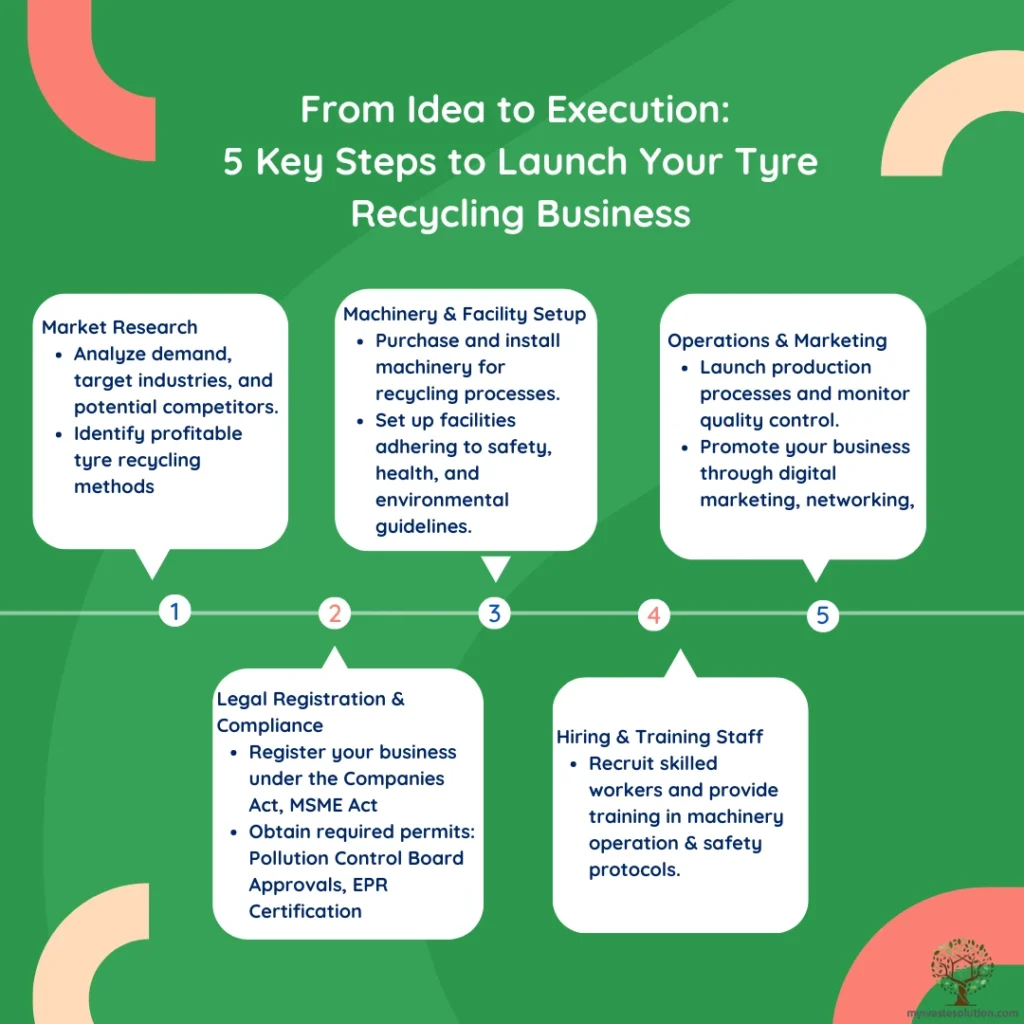
6.2 Essential Machinery and Equipment for Tyre Recycling
The tyre recycling process becomes more efficient and faster with the right machinery and equipment. Different recycling methods, such as mechanical shredding, pyrolysis, and cryogenic grinding, require specific tools. Essential equipment includes:
- Tyre Shredders – Reduce tyres into smaller pieces.
- Granulators – Further process shredded tyres into crumb rubber.
- Magnetic Separators – Extract steel components.
- Fiber Separators – Remove fabric and non-rubber materials.
- Pyrolysis Reactors – Convert tyres into oil, gas, and carbon black.
- Condensers – Recover liquid fuel from pyrolysis gas.
- Carbon Black Processing Units – Refine carbon black for industrial applications.
- Cryogenic Grinding Machines – Use liquid nitrogen to create ultra-fine rubber powder.
- Dust Control Systems – Reduce air pollution during processing.
6.3 Operational Steps for Starting a Tyre Recycling Business
A very first step after research and planning is execution! You should invest your time and money where you get qualitative and efficient output. To operate a tyre recycling business you should have a well structured approach. You should follow the given steps-
| Sr.No. | Steps | Description |
| 1. | Conduct Market Research | Identify demand for recycled tyre products in your region.Analyze competitors, pricing strategies, and potential customers. |
| 2. | Develop a Business Plan | Define your target market. Outline operational strategies, budget estimates, and projected revenue.Include details about funding sources, marketing plans, and scalability. |
| 3. | Secure Funding | Explore funding options, such as bank loans, government subsidies, or venture capital. Investigate schemes like the Make in India initiative for financial incentives. |
| 4. | Obtain Necessary Licenses and Permits | Apply for all required approvals, including environmental clearances, business registration, and fire safety certifications. |
| 5. | Procure Machinery and Equipment | Purchase essential machinery based on your recycling method and production capacity. Ensure installation and testing of equipment before beginning operations. |
| 6. | Set Up the Facility | Construct the facility with proper zoning for storage, machinery, and waste management. Install pollution control equipment to meet regulatory standards. |
| 7. | Hire and Train Staff | Recruit skilled workers for machinery operation, waste handling, and administrative tasks. Conduct safety and environmental training sessions. |
| 8. | Start Operations | Establish partnerships with tyre collection centers or scrap dealers. Start the recycling process, focusing on quality control and efficiency. |
| 9. | Market Your Products | Promote your tyre recycled products (e.g., crumb rubber, carbon black) to industries such as construction, automotive, and landscaping. Highlight the eco-friendly aspect of your business to attract environmentally conscious buyers. |
Find and connect with leading companies specializing in tyre waste recycling business solutions.
Get Connected Today
7. Cost & Funding Options for Tyre Recycling Business in India
Setting up a tyre recycling business in India requires significant investment and a well-planned funding strategy. Proper budgeting ensures smooth operations and helps identify funding gaps. The initial investment includes costs for land, machinery, and infrastructure, while operational expenses cover energy, labor, maintenance, and transportation. Compliance with environmental regulations also incurs costs for licenses and permits. Funding sources can include bank loans, government subsidies, and private investors. The potential return on investment depends on revenue from recycled products, market demand trends, and overall profit margins.
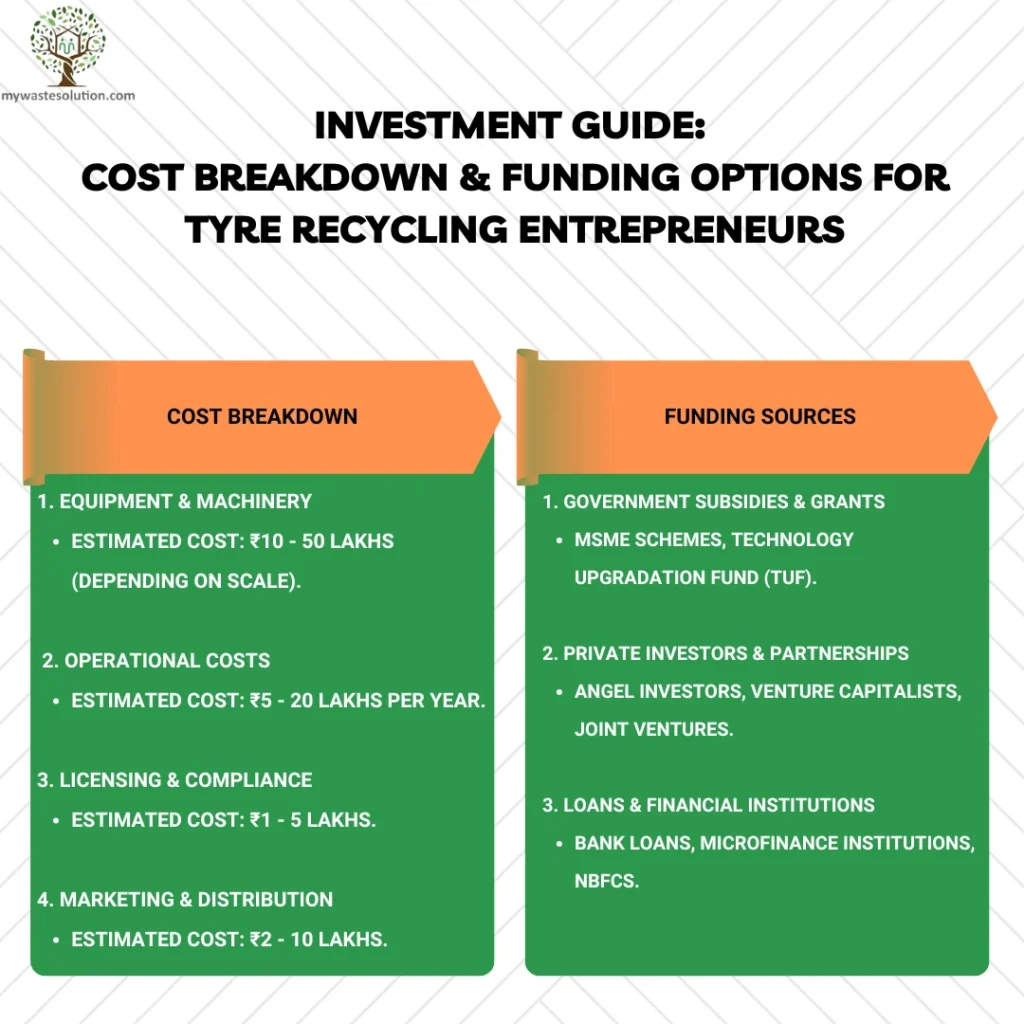
7.1 Estimating Startup Costs for Tyre Recycling
As you know implementation cost is the hardest part to deal with. Let’s understand how a new entrepreneur like you can manage your budget to start a startup with tyre recycling-
| Sr.No. | Breakdown of investment | Description |
| 1. | Machinery and Equipment | Shredding and Grinding Equipment: ₹30–50 lakhs.Pyrolysis Reactors (if applicable): ₹1–2 crores.Supporting Equipment: Magnetic separators, fiber removers, dust control systems, etc. (₹10–20 lakhs). |
| 2. | Facility Setup | Land Acquisition or Lease: ₹10–50 lakhs (location-dependent).Construction and Infrastructure: ₹10–30 lakhs.Utilities Installation: ₹5–10 lakhs (electricity, water, waste disposal). |
| 3. | Licenses and Permits | Costs for obtaining environmental clearances, factory licenses, and other permits: ₹2–5 lakhs. |
| 4. | Labor Costs | Salaries for skilled and unskilled workers: ₹2–5 lakhs/month. |
| 5. | Raw Material Procurement | Cost of sourcing scrap tyres: ₹3–7 per kg |
| 6. | Energy and Maintenance | Electricity and fuel: ₹1–2 lakhs/month.Equipment maintenance: ₹2–5 lakhs/year. |
| 7. | Marketing and Distribution | Advertising, logistics, and partnerships: ₹2–5 lakhs annually. |
| 8. | Miscellaneous Costs | Office setup, safety equipment, insurance, and legal fees: ₹5–10 lakhs. |
7.2 Funding Options for Tyre Recycling Businesses
Securing funding is essential for business planning. Funding can come from various sources. You just need to have a solid business outline. Here are the main funding sources-
| Sr.No. | Funding Source | Features | Advantages | Disadvantages |
| 1. | Bank Loans | Loans are available under business financing schemes.Interest rates typically range from 8% to 14%. | Flexible repayment options.Large funding amounts available. | Lengthy approval process.Requires collateral or a strong credit history. |
| 2. | Government Grants and Subsidies | Make in India initiative.MSME schemes for small and medium enterprises.Environmental grants for waste management.Green Financing; Loans or investments from institutions supporting environmental projects. | Lower interest rates or no repayment required for grants.Support for eco-friendly initiatives. | Highly competitive application process.Limited funding amounts. |
| 3. | Self-Funding or Bootstrapping | Personal savings or funds from friends and family. | Full control of the business.No debt or equity dilution. | Limited scalability.High personal financial risk. |
| 4. | Venture Capital (VC) | Equity-based funding from investors | No repayment obligation.Access to industry expertise and networking. | Investors may demand significant equity.High expectations for rapid growth and profitability. |
7.3 Return on Investment (ROI) for Tyre Recycling
ROI, or Return on Investment, is the ratio of net profit to the initial investment cost. In the tyre recycling business, achieving a strong ROI requires proper budgeting, strategic funding, and efficient operations. While the initial investment is significant, profitability can be ensured through cost-effective production, market demand, and competitive pricing. By securing diverse funding sources and optimizing operational efficiency, entrepreneurs can maximize returns while promoting environmental sustainability. The overall ROI is influenced by factors such as market trends, pricing strategies, equipment investments, and operational efficiency.
Let’s discuss the revenue streams for different end products according to market –
| Sr.No. | Tyre recycling products | Market Price |
| 1. | Crumb Rubber | ₹20–50 per kg |
| 2. | Pyrolysis Oil | ₹35–50 per liter |
| 3. | Carbon Black | ₹20–30 per kg |
| 4. | Steel Wire | ₹10–20 per kg |
Estimated profit margin is 20–35% (varies with scale and efficiency). Other than that you need to focus on efficient use of machinery and raw materials, consistent demand and competitive pricing and effective marketing and distribution strategies.

Explore the best tyre waste treatment machinery and plants for setting up your tyre waste recycling business.
Connect Today8. Key Revenue Streams in Tyre Recycling Business
Tyre recycling businesses generate income through various revenue streams, including crumb rubber, steel, tyre-derived fuel (TDF), carbon powder, and consumer goods. By converting waste tyres into valuable materials, these businesses not only create profitable opportunities but also contribute to environmental sustainability. Maximizing revenue requires efficient production processes, market-driven pricing, and strategic partnerships.

A detailed analysis of these revenue opportunities helps in optimizing profitability and expanding market reach. Let’s have a look at them –
8.1 Revenue from Recycled Crumb Rubber
Recycled crumb rubber is in high demand across various industries. Due to their versatility and cost-effectiveness they are major by-products of the tyre recycling business. Let’s have a look at the potential revenue from recycled crumb rubber along with its application-
| By- products | Market Price | Application |
| Crumb rubber | ₹20–50 per kg. | Road construction (rubberized asphalt).Sports fields and playground surfaces.Industrial rubber mats and flooring.Manufacturing of new tyres, gaskets, seals, and conveyor belts.Rubber mulch for landscaping and gardening. |
8.2 Selling By-products like Pyrolysis Oil and Steel
Other than crumb rubber, we have many other important products which provide us with revenue. Pyrolysis oil and steel is one of them which enhances profitability in your business by generating revenue.
| By-product | Market Price | Application |
| Pyrolysis Oil | ₹35–50 per liter | Industrial heating applications.Substitute for furnace oil in power plants and manufacturing units. |
| Steel | ₹10–20 per kg | Scrap metal industry.Raw material for construction and manufacturing. |
8.3 Developing New Markets for Recycled Tyre Products
Business thrives on innovation, and entrepreneurs who identify gaps in the market can build successful ventures. Expanding and developing new markets for recycled tyre products is crucial for sustained growth and diversified revenue.
Market expansion strategies focus on targeting emerging industries. In construction, crumb rubber is increasingly used in concrete to enhance durability and flexibility. The automotive sector presents opportunities for recycled rubber in manufacturing components like mats and gaskets. Similarly, the sports and recreation industry relies on crumb rubber for artificial turf, running tracks, and playground surfaces.
Developing niche products further strengthens revenue streams. Rubberized roofing materials, waterproofing membranes, and noise- and vibration-damping solutions for machinery are high-value applications with growing demand.
Strategic partnerships play a key role in scaling operations. Collaborating with road contractors, construction firms, and automotive manufacturers, as well as securing government contracts for infrastructure projects, can significantly boost revenue.
Market diversification reduces dependency on a single revenue source, enhances financial stability, and broadens industry reach. By staying ahead of market trends, identifying new applications, and diversifying revenue streams, businesses can achieve sustainable growth and maximize profitability.
9. Effective Marketing Strategies for Tyre Recycling Business Success
Effective marketing strategies enhance customer awareness, secure supply chains, and create a competitive edge in the tyre recycling industry. A strong online presence through SEO-optimized content, social media, and digital ads attracts potential buyers. Networking with industries like construction and automotive expands market reach. Educational initiatives such as webinars and sustainability campaigns drive demand for recycled products. By implementing targeted marketing, businesses can establish a solid market position and ensure long-term growth.
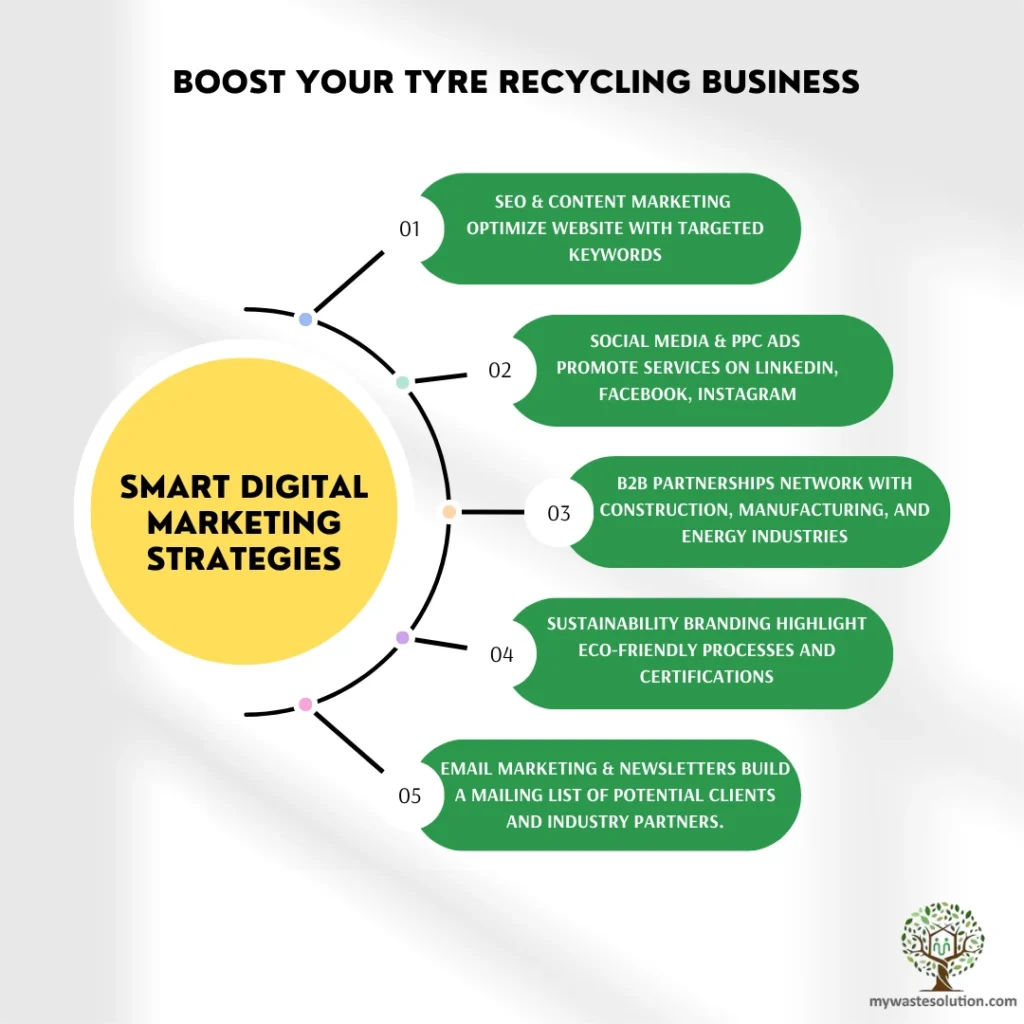
9.1 Digital Marketing for Tyre Recycling Businesses
Digital marketing for the tyre recycling business offers cost-effective ways to connect with potential customers and industry partners. It enhances brand visibility, builds credibility and trust, and expands market reach globally. Additionally, online marketing streamlines customer inquiries, making communication easier and more efficient. Some of the digital marketing strategies are-
| Sr.No. | Way of Digital Marketing | Description |
| 1. | SEO (Search Engine Optimization) | Optimize your website for keywords like “tyre recycling in India,” “crumb rubber suppliers,” and “eco-friendly rubber products.Use localized SEO to target specific regions where you operate.Publish informative blogs and articles about tyre recycling, sustainability, and product applications to improve search rankings. |
| 2. | Social Media Marketing | Leverage platforms like LinkedIn, Facebook, and Instagram to showcase your business.LinkedIn: Build industry credibility and connect with potential B2B customers.Facebook/Instagram: Share success stories, customer testimonials, and product applications.Use targeted ads to reach specific audiences, such as construction firms or manufacturers. |
| 3. | Content Marketing | Create engaging content, such as:Videos demonstrating recycling processes or product applications.Infographics about the environmental benefits of tyre recycling.Case studies showcasing your impact on sustainability. |
| 4. | Email Marketing | Send newsletters to potential and existing customers highlighting new products, partnerships, or milestones. |
9.2 Networking with Tyre Manufacturers and Distributors
Building strong relationships with tyre manufacturers and distributors is key to expanding your market reach and securing a steady supply of raw materials. One way to achieve this is by joining industry associations such as the All India Rubber Industries Association (AIRIA) and the Material Recycling Association of India (MRAI), which provide networking and collaboration opportunities.
Establishing partnerships with tyre manufacturers can be beneficial for recycling production waste while offering value-added services like reverse logistics for used tyres. Additionally, collaborating with distributors and dealers allows access to end-of-life tyres, with long-term contracts ensuring a reliable supply chain.
Attending industry events like Rubber Expo India and the Indian Tyre Technical Conference helps gain stakeholder attention, providing a platform to showcase products and services to a targeted audience. Keeping up with industry trends and emerging technologies strengthens your position in the market and ensures business sustainability.
9.3 Building Brand Awareness in the Tyre Recycling Market
Branding sets your tyre recycling business apart by establishing a strong market presence. A well-defined brand attracts customers, secures partnerships, and drives long-term growth through digital outreach, networking, and competitor research.
- Digital marketing is key to brand visibility. Investing in Google Ads, social media promotions, and trade publications highlights your unique selling points, such as eco-friendly impact or innovative recycling technologies.
- Public relations builds credibility. Issuing press releases about milestones, certifications, or partnerships and encouraging customer reviews on Google and social media strengthen your reputation.
- Community engagement boosts brand recognition. Partnering with local organizations for tyre collection drives and involving schools and NGOs promotes environmental awareness.
- A sustainability focus enhances trust. Highlighting eco-friendly practices, securing ISO 14001 certification, and sponsoring green initiatives reinforce your commitment to responsible recycling.
10. Overcoming Key Challenges in the Tyre Recycling Business
Business comes with challenges! The tyre recycling industry offers significant opportunities, but businesses must address various challenges to achieve sustainable growth. Below is an exploration of common challenges,its impact, and strategies for overcoming them.
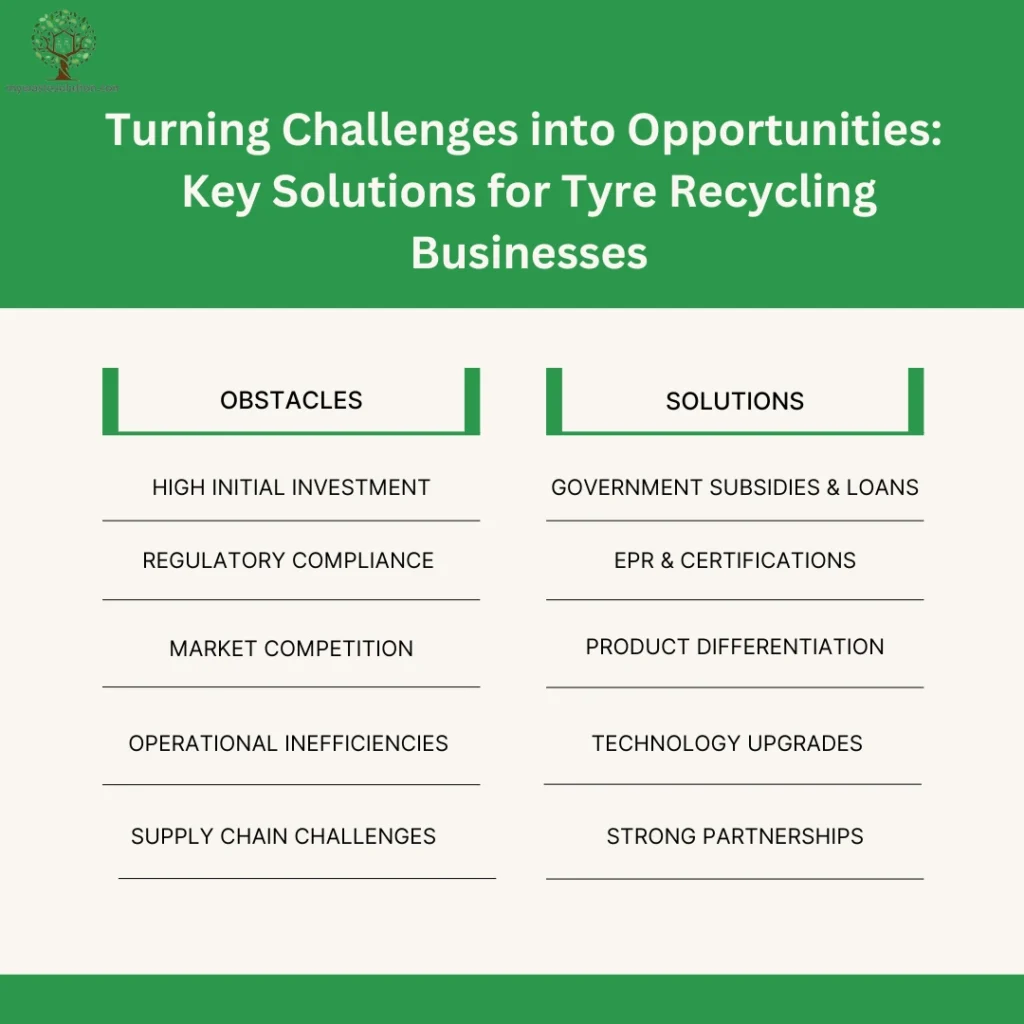
10.1 Common Challenges in the Tyre Recycling Industry
| Sr. No. | Challenges in Tyre recycling business | Issue | Impact | Mitigation strategies |
| 1. | Fluctuating Raw Material Prices | Prices for scrap tyres and by-products like pyrolysis oil and crumb rubber can vary significantly. | Fluctuations affect profit margins and financial planning. | Establish long-term contracts with suppliers to secure consistent pricing.Diversify sourcing channels to reduce dependence on a single supplier. |
| 2. | Regulatory Hurdles | Stringent environmental regulations and lengthy approval processes can delay operations. | Non-compliance can lead to fines, legal issues, or shutdowns. | Stay updated on national and state-level regulations.Work with consultants or legal experts to ensure timely compliance. |
| 3. | Operational Inefficiencies | Inefficient processes can increase costs and reduce productivity. | Lower profitability and reduced competitiveness. | Invest in advanced recycling technology to enhance efficiency.Regularly maintain machinery to minimize downtime. |
| 4. | Market Competition | Increasing competition from established players and alternative recycling methods. | Pressure on pricing and market share. | Differentiate your business with superior quality, eco-friendly practices, or unique products.Focus on building long-term customer relationships. |
10.2 Solutions for Operational and Regulatory Challenges
Every challenge has a solution, and addressing operational and regulatory hurdles in the tyre recycling business requires strategic planning.
- Process Optimization
- Conduct regular audits to identify inefficiencies.
- Implement lean manufacturing principles to minimize waste and costs.
- Conduct regular audits to identify inefficiencies.
- Technology Upgrades
- Use automated shredders and granulators to enhance productivity.
- Integrate data analytics to monitor and optimize operations.
- Use automated shredders and granulators to enhance productivity.
- Staff Training
- Train employees on the latest recycling techniques and safety protocols.
- Conduct workshops to improve operational knowledge and efficiency.
- Train employees on the latest recycling techniques and safety protocols.
- Proactive Compliance
- Develop a compliance calendar to track license and permit renewals.
- Engage with regulatory authorities to stay updated on new requirements.
- Develop a compliance calendar to track license and permit renewals.
- Sustainability Initiatives
- Implement pollution control measures like dust suppression systems.
- Obtain ISO 14001 certification to reinforce environmental responsibility.
- Implement pollution control measures like dust suppression systems.
- Stakeholder Collaboration
- Partner with environmental consultants and industry associations for smoother compliance.
10.3 Strategies for Business Growth in the Recycling Sector
For sustainable growth in the tyre recycling business, strategic approaches are essential. By optimizing operations, ensuring compliance, and adopting innovative growth strategies, businesses can thrive while contributing to environmental sustainability.
Struggling with tyre waste buying and selling issues? Connect with top tyre waste buyers and sellers here.
Buyer Listings Seller Listings- Diversifying Product Offerings – Develop new products like rubberized roofing, waterproofing membranes, and soundproofing materials for various industries.
- Expanding Market Reach – Enter new geographic markets and collaborate with industries and government projects for large-scale recycling initiatives.
- Digital Marketing – Leverage SEO, social media, and paid ads to boost brand visibility and engage customers effectively.
- Enhancing Operational Efficiency – Implement automation and train employees in efficient recycling techniques to reduce costs.
- Staying Updated on Industry Trends – Monitor emerging technologies and policy changes, attend trade shows and conferences for insights.
- Technological Advancements – Invest in cutting-edge equipment like pyrolysis reactors and advanced shredders to optimize processes.
- Regulatory Compliance – Adhere to CPCB guidelines, maintain necessary licenses and permits, and track policy updates.
- Understanding Consumer Preferences – Analyze market demand and educate customers on the benefits of recycled products.
- Collaborative Innovation – Partner with research institutions and stakeholders to develop innovative solutions and improve sustainability.
11. Future Trends in the Tyre Recycling Business in India
The tyre recycling business in India is set for rapid growth, driven by environmental awareness, regulations, and technology. With stricter waste policies and demand for sustainable materials, efficient recyclers will gain a market edge. Innovations in automation, pyrolysis, and rubber repurposing boost efficiency and profits. Government support for circular economy practices further strengthens industry prospects. As industries shift to eco-friendly alternatives, demand for crumb rubber, TDF, and recycled products is rising. By focusing on innovation, compliance, and sustainability, businesses can achieve long-term success while supporting environmental conservation.

11.1 Projected Growth of Tyre Recycling in India
The tyre recycling market in India is projected to grow at a CAGR of 8-12% over the next decade. Rising demand for crumb rubber, pyrolysis oil, and carbon black in construction, automotive, and energy sectors is driving expansion.
Government policies like Extended Producer Responsibility (EPR) and incentives for waste management businesses encourage tyre recycling adoption. Industries are shifting to eco-friendly materials, boosting demand.
Infrastructure projects, especially road construction, fuel the need for rubberized asphalt, while advanced recycling technologies improve efficiency and profitability. Entrepreneurs leveraging these opportunities can achieve sustainable business growth.
11.2 Innovations in Tyre Recycling Technology
Staying competitive requires continuous innovation. Businesses investing in Research and Development (R&D) and leveraging technological advancements can maintain a market edge. Collaborating with academic institutions and tech startups helps enhance processes, reduce emissions, and improve environmental sustainability.
Key Innovations in Tyre Recycling Technology:
- Advanced Pyrolysis Techniques – Improves yield and quality of oil, carbon black, and syngas.
- Cryogenic Grinding – Uses liquid nitrogen to create finer, high-quality crumb rubber for aerospace and sports surfaces.
- Devulcanization Technologies – Breaks down vulcanized rubber, enabling high-grade recycled rubber for new tyres and industrial products.
- Automation and AI Integration – AI-driven sorting systems optimize operations, while predictive maintenance tools reduce downtime.
Leveraging these advancements can drive growth, efficiency, and sustainability in the tyre recycling business in India.
11.3 Sustainable Development and Environmental Impact
The tyre recycling business in India has a promising future. By adopting advanced recycling technologies, engaging with communities, and focusing on sustainability, the industry can achieve profitability while contributing to India’s environmental and economic progress. Recycling tyres plays a crucial role in promoting sustainable development, supporting the circular economy by reducing waste and conserving natural resources. Processing one tonne of tyres prevents approximately 0.67 tonnes of CO₂ emissions, directly aiding India’s climate change mitigation goals. Additionally, recycling helps lower landfill waste and mitigates the risk of tyre fires, which release harmful toxins into the environment.
Beyond environmental benefits, tyre recycling businesses can contribute to resource conservation by reducing the demand for virgin raw materials, thereby lowering energy consumption and minimizing resource depletion. Community engagement and environmental stewardship are essential in promoting public awareness. Collaborating with NGOs and local governments can help educate communities on the importance of recycling and encourage responsible waste disposal. Moreover, the tyre recycling industry generates employment opportunities, driving economic development in local communities. With technological advancements, regulatory support, and increased sustainability efforts, the sector is well-positioned for long-term growth in India.
12. Why Now is the Best Time to Start a Tyre Recycling Business
The tyre recycling industry in India offers immense potential, blending profitability with sustainability. As tyre waste rises, businesses can thrive by adopting advanced recycling technologies and creating eco-friendly products like crumb rubber and pyrolysis oil.Ensuring regulatory compliance, optimizing operations, and fostering strategic partnerships strengthen market positioning. Community engagement and public awareness drive demand for sustainable solutions. By focusing on innovation and resource efficiency, the tyre recycling business can contribute to India’s circular economy, reduce waste, and secure long-term growth.
12.1 Summary of Key Advantages
Let’s summarise the key advantages of tyre recycling business-
- Profitable Revenue Generation – The growing demand for crumb rubber, pyrolysis oil, and steel ensures a steady income. Government incentives and the expanding market for sustainable products further enhance profitability.
- Sustainability – Tyre recycling reduces pollution, minimizes landfill waste, and conserves natural resources, aligning with India’s circular economy goals and environmental policies.
- Market Demand – Rapid infrastructure growth and increasing environmental awareness are driving the need for recycled materials in construction, automotive, and energy industries, creating vast opportunities.
- Positive Environmental & Community Impact – Recycling tyres reduces harmful emissions, protects ecosystems, and creates jobs, promoting both economic growth and environmental responsibility in underserved communities.
12.2 How Can We Help You
The tyre recycling business is more than just a profitable venture—it’s a commitment to a sustainable future. Entrepreneurs in this sector have the power to drive meaningful change while gaining financial success. As the saying goes, opportunities don’t just happen; they are created by visionary entrepreneurs like you!
With the world facing an escalating tyre waste challenge, now is the perfect time to invest in tyre recycling. By transforming waste into valuable resources, you contribute to pollution reduction, resource conservation, and sustainable development. Join the movement for a cleaner, greener future today!
Take your first step with https://www.mywastesolution.com/—your trusted partner in developing a solid business plan, understanding market trends, and navigating regulatory requirements. Seize this opportunity to make a difference and collaborate with industry experts today!
FAQ’S
Q1. What is tyre recycling?
Answer – Tyre recycling is the process of recovering materials from used tyres to reduce environmental pollution and conserve natural resources.
Q2. What are the benefits of tyre recycling?
Answer – Tyre recycling helps reduce the burden on landfills and allows for the reuse of valuable materials.
Q3. What are the markets for recycled tyre materials?
Answer- Recycled tyre materials can be used to make commodity materials like tyre-derived fuel (TDF), crumb rubber and can be used in the construction industry.
Q4. What is pyrolysis?
Answer -Pyrolysis involves heating tyres in the absence of oxygen at high temperatures,
Q5. What is the problem with waste tyres?
Answer- Tyre waste, including carbon emissions, impacts the environment through air, water, and soil pollutants. Furthermore, dumping tyre waste in landfill may increase health .
Q6. List down different Tyre recycling methods.
Answer – Tyre recycling methods are-
- Mechanical Recycling (Shredding and Grinding)
- Cryogenic Grinding
- Pyrolysis
- Devulcanization
Q7. What are different types of hazards or environmental impacts associated with tyre dumping in landfill?
Answer- Environmental impact of waste tyre dumping –
- Non-Biodegradability
- Air pollution
- Soil pollution and water pollution
- Fire hazard
- Vector borne disease
Q8. What are the Funding Options for Tyre Recycling Businesses?
Answer – Funding Sources for tyre recycling business in India are-
- Bank Loans
- Government Grants and Subsidies
- Self-Funding or Bootstrapping
- Venture Capital (VC)
Q9. What are the Key Permits and Licenses Required to start the tyre recycling business?
Answer – Key Permits and Licenses Required are-
- Environmental Clearances
- Factory License
- Business Registration
- GST Registration
- Import/Export License (if applicable)
- Fire Safety Certificate
- Municipal or Local Authority Approvals
Q10. What is ROI?
Answer- ROI stands for Return on Investment. It’s a financial metric that measures the profitability of an investment by comparing its gain or loss to its cost.
